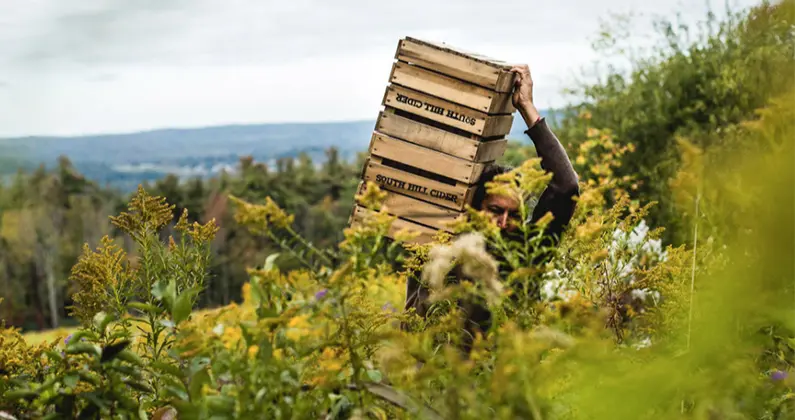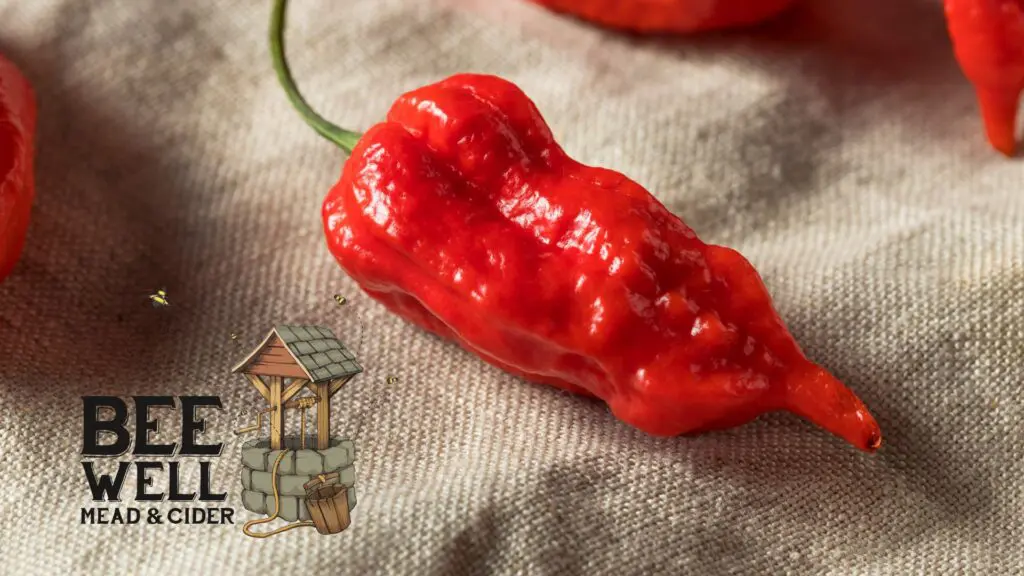A musician, forager and crafter, Steve Selin wears many hats. Owner and operator of South Hill Cider in Ithaca, New York, Selin has been growing his business over the past few years, a significant amount actually since the last time Cidercraft spoke with him in 2016. South Hill now has a tasting room, ships to 39 states and sources from an estate orchard. Of course Selin is still foraging wild apples for some of his ciders, a trait he’s been known for since the beginning.
South Hill operates out of the Finger Lakes region in New York, a place with a rich history of cidermaking. Early settlers of the area planted apple trees as a sustainable, multi-faceted crop used for eating and drinking. Selin says his inspiration to make cider and forage fruit from these old trees comes from the region’s deep heritage with the craft.
Cidercraft: You started out making cider in your basement, what made you decide to take your operation commercial?
Steve Selin: For years I was making cider for my community, I was making barrels of cider and I was taking kegs and bottles of it to music festivals… I was working as a musician in winery tasting rooms and I started collaborating with winemakers on cidermaking. We would do blind tastings of commercial ciders and those were usually not as good as the ciders we were already making.
CC: What was the reaction of people who tried your cider at these festivals?
SS: I would have cases or kegs of cider… and nine out of 10 people that came to drink this stuff were blown away that it was cider. They thought it was more like Champagne, like nobody had ever had a dry cider before. I kind of got well known in that music community for my cider. This was years before I had the name South Hill Cider, or a license, I would just give it away for free to friends. That’s what got me inspired to keep going with cider, introducing people to cider, plus the fact I could make it from apples I foraged, and you could turn that into such a high-quality beverage, it was energizing an exciting. Now having this tasting room, it’s bringing me back and reminding me that introducing people to this kind of cider is what has kept me making cider all these years.
CC: What has been your most popular cider?
SS: I would say my most popular cider is Old Time; it has the most diverse source of fruit. It incorporates wild apples, foraged fruit from abandoned orchards, bittersweet apples grown in a nearby orchard and it has heirlooms, from trees that are still in the ground from 70 years ago. It was one of the very first ciders I released when I started commercial production. I started with two ciders and a pommeau.
CC: What is the environment like where your tasting room and orchard are located?
SS: The Finger Lakes create an environment that is suitable for high-quality fruit growing. We are located at the edge of one of the glacial hills that drops down into the lake valley, a 600-foot drop from our orchard down. It’s a beautiful view across the valley, but more importantly it’s an excellent location for an orchard because the cold air can drain downhill. The tasting room is located right there. We pour about a dozen ciders [by the bottle] and are planning to set up a tap system.











 Introducing Island Daiquiri from @portlan
Introducing Island Daiquiri from @portlan


 How spicy is too spicy? Meet The Imperial Gho
How spicy is too spicy? Meet The Imperial Gho






